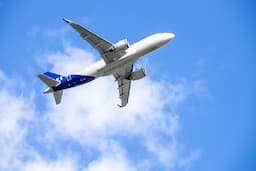The terms Logistics and Supply chain are used interchangeably.
Supply Chain is an end to end process starting from the procurement of raw materials till the delivery of finished goods. Supply Chain Management takes care of the overall inbound and outbound process. It includes purchasing of materials, materials handling, logistics, transportation, inventory control, and supply chain management .This intersection of different departments has resulted in the confusion between logistics and supply chain management definition.
Logistics is the geographical repositioning of goods from the point of origin to the point of consumption.
These two terms have some similarities but the core concept is different.
Supply Chain is a process of linking multiple process to achieve competitive advantage, while logistics is the storage, movement and flow of goods, service and information within the supply chain.
What is Supply Chain Management?
It is the management of a number of organizations or teams working together and supply chain helps to manage the flow of raw materials and produce finished goods of sellable value. It is the responsibility of Supply chain Managers to ensure that a finished product not only reaches the end consumer but also meets all expectations of the customers as well. Logistics is just a part of the larger.
What is Logistics?
It includes planning, implementing and controlling the efficient and effective forward and reverse flow and storage of goods, services and information between the point of origin and the point of consumption to meet the customer requirements.
Logistics is of two types: Forward Logistics and Reverse Logistics
Forward Logistics is management of forward movement of goods as they transition from raw materials to end-consumers. Reverse logistics is a type of supply chain management that moves goods from customers back to the sellers or manufacturers
The goal of logistics is to make sure the customer receives the desired product at the right time and place with the right quality and price. This whole process can be divided into two subcategories: inbound logistics and outbound logistics.
Inbound logistics includes the activities includes procuring materials and then handling, storing and movement of goods. Outbound logistics includes the activities concerned with the collection, maintenance and distribution to the end customer. Other activities like packing and order fulfilment, warehousing, managing stock and maintaining the balance between supply and demand also factor into logistics.
Key Differences
When it comes to Logistics and Supply Chain one process cannot exist without the other. Here are some key differences between the two terms that will help you in better understanding.
• Supply chain management links major business processes within and across companies into a high-performance business model that drives competitive advantage
• Logistics is an activity within the supply chain.
• Logistics refers to the movement, storage, and flow of goods, services and information inside and outside the organization.
• The main focus of supply chain is a competitive advantage, while the main focus of logistics is meeting customer requirements.
• Logistics is a term that has been around for a long time, while supply chain management is a relatively new term.
Technologies used in Supply Chain Management and Logistics are
• Enterprise Resource Planning (ERP) software: It is similar to a central nervous system, for a business, as it collects information about the activity and state of various divisions of the business
• Radio Frequency Identification (RFID ) : It uses radio waves to read and capture information stored on a tag attached to an object, which can be read from up to several feet away.
• Customer Relationship Management (CRM) Software: CRM is a category of software including a broad set of applications, designed to help businesses manage many of the following processes: customer data, customer interaction, information access, and sales automation.
• Big Data : extremely large data sets that may be analysed to reveal patterns, trends and associations, especially relating to human behaviour and interactions
Logistics :
• Transportation Management System (TMS): It is a logistics platform helping users to manage and optimize daily operations of the transportation fleets.
• Warehouse Management System (WMS): It is a software and processes to control and manage warehouse operations from the time goods or materials enter the warehouse until they move out for delivery.
All these contents are covered and taught by the faculty of Guiders Education
Guiders education has made a mark for itself by placing our students in both renowned Logistics and Supply Chain Management companies.
AMAZON, TVS supply chain, Nestle are a few of the SCM companies where Guiders students have found placement.
Logistics companies where Guiders students have had a major contribution are MAERSK, ALSTOM, NAUTICAL CARGO, AGILITY LOGISTICS ,YUSEN LOGISTICS to name a few.






